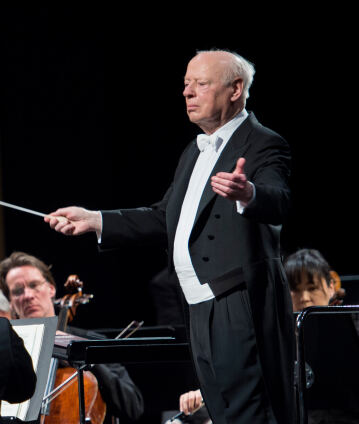Bernard Haitink conducts Mahler’s Seventh Symphony

Shadowy night scenes, an aggressively jubilant finale: Gustav Mahler’s Seventh Symphony is a work of extreme expressive diversity. Bernard Haitink is one of its most competent interpreters, as this performance shows. “Mahler’s Seventh baffles many conductors,” a critic wrote. “Not Bernard Haitink, who approaches this immense, difficult work with verve and is not content with mere virtuosity.”
It is his unpretentious musicality, in particular, avoiding all exaggeration, that makes Bernard Haitink an ideal conductor of the symphonies of Gustav Mahler, which are unsuited to interpretational excess and forced originality. Haitink looks back on many years of experience with Mahler and has recorded the First through the Seventh Symphonies and the Adagio of the Tenth with the Berliner Philharmoniker. For that reason, the performance of the Seventh in January 2009 was anticipated with great excitement.
The composer considered it his “best work” up to that point and in a letter to his publisher wrote that it had a “primarily cheerful” character. The rather gloomy introduction of the first movement, with a melody played by the tenor horn above a funeral-march rhythm, casts doubt on that assessment. Musicologists will probably never agree on the question of whether the C major exultation of the finale is intended seriously or put in quotation marks, so to speak, as exaggeration.
The middle movement is a ghostly Scherzo, marked “shadowy” and framed by two movements described as “night music”. The solemn slow movement usually obligatory in Mahler’s symphonic works is replaced in fourth position by a serenade-like Andante amoroso, which is accompanied by mandolin and guitar.
© 2009 Berlin Phil Media GmbH